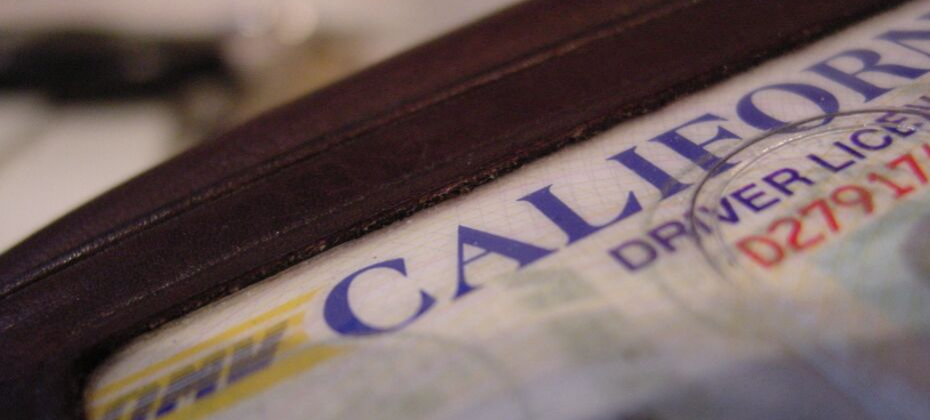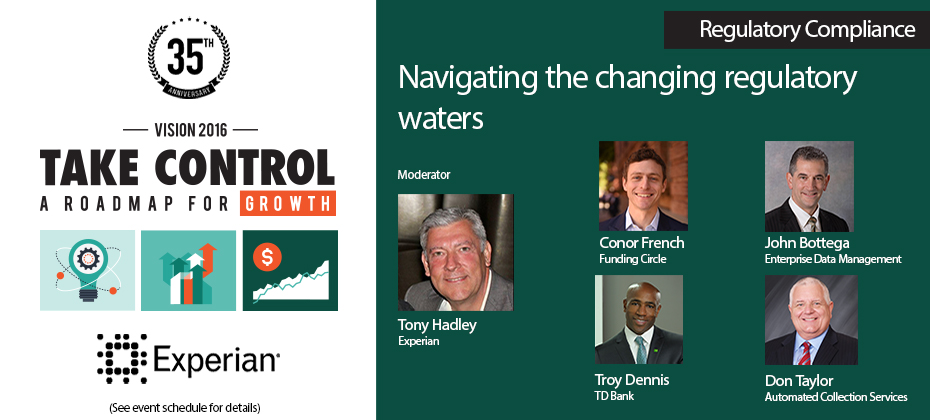Tag: credit scoring

Alternative credit scoring has become mainstream. Lenders that use alternative credit scores can find opportunities to expand their lending universe without taking on additional risk and more accurately assess the credit risk of traditionally scoreable consumers. Obtaining a more holistic consumer view can help lenders improve automation and efficiency throughout the customer lifecycle. What is alternative credit scoring? Alternative credit scoring models incorporate alternative credit data* that isn't typically found on consumer credit reports. These scores aren't necessarily trying to predict alternative outcomes. The goal is the same — to understand the likelihood that a borrower will miss payments in the future. What's different is the information (and sometimes the analytical techniques) that inform these predictions.Traditional credit scoring models solely consider information found in consumer credit reports. There's a lot of information there — Experian's consumer credit database has data on over 245 million consumers. But although traditional consumer data can be insightful, it doesn't necessarily give lenders a complete picture of consumers' creditworthiness. Alternative credit scores draw from additional data sources, including: Alternative financial services: Credit data from alternative financial services (AFS) can tell you about consumers' experiences with small-dollar installment loans, single-payment loans, point-of-sale financing, auto title loans and rent-to-own agreements. Buy Now Pay Later: Buy Now Pay Later (BNPL) borrowing is popular with consumers across the scoring spectrum, and lenders can use access to open BNPL loans to better assess consumers' current capacity. Rental payments: Landlords, property managers, collection companies, rent payment services and consumer-permissioned data can give lenders access to consumers' rent payment history. Full-file public records: Credit reports generally only include bankruptcy records from the previous seven to ten years. However, lenders with access to full-file public records can also learn about consumers' property deeds, address history, and professional and occupational licenses. READ: Take a deep dive into Experian's State of Alternative Credit Data report to learn more about the different types of alternative credit data and uses across the loan lifecycle. With open banking, consumers can now easily and securely share access to their banking and brokerage account data — and they're increasingly comfortable doing so. In fact, 70% would likely share their banking data for better loan rates, financial tools or personalized spending insights.Tools like Experian Boost allow consumers to add certain types of positive payment information to their Experian credit reports, including rent, utility and select streaming service payments. Some traditional scores consider these additional data points, and users have seen their FICO Score 8 from Experian boosted by an average of 13 points.1 Experian Go also allows credit invisible consumers to establish a credit report with consumer-permissioned alternative data. The benefits of using alternative credit data The primary benefit for lenders is access to new borrowers. Alternative credit scores help lenders accurately score more consumers — identifying creditworthy borrowers who might otherwise be automatically denied because they don't qualify for traditional credit scores. The increased access to credit may also align with lenders' financial inclusion goals.Lenders may additionally benefit from a more precise understanding of consumers who are scoreable. When integrated into a credit decisioning platform, the alternative scores could allow lenders to increase automation (and consumers' experiences) without taking on more credit risk. The future of alternative credit scoring Alternative credit scoring might not be an alternative for much longer, and the future looks bright for lenders who can take advantage of increased access to data, advanced analytics and computing power.Continued investment in alternative data sources and machine learning could help bring more consumers into the credit system — breaking barriers and decreasing the cost of basic lending products for millions. At the same time, lenders can further customize offers and automate their operations throughout the customer lifecycle. Partnering with Experian Small and medium-sized lenders may lack the budget or expertise to unlock the potential of alternative data on their own. Instead, lenders can turn to off-the-shelf alternative models that can offer immediate performance lifts without a heavy IT investment.Experian's Lift PlusTM score draws on industry- leading mainstream credit data and FCRA-regulated alternative credit data to provide additional consumer behavior insights. It can score 49% of mainstream credit-invisible consumers and for thin file consumers with a new trade, a 29% lift in scoreable accounts. Learn more about our alternative credit data scoring solutions. Learn more * When we refer to “Alternative Credit Data," this refers to the use of alternative data and its appropriate use in consumer credit lending decisions as regulated by the Fair Credit Reporting Act (FCRA). Hence, the term “Expanded FCRA Data" may also apply in this instance and both can be used interchangeably.1Experian (2023). Experian Boost

Conventional credit scoring systems are based on models developed over six decades. As consumer behavior evolves, it's important to seek newer, fresher sources of data to assess creditworthiness. Because the data used by conventional credit scoring models does not provide the full picture of a consumer's financial health, a large population segment of the United States is excluded from accessing credit.With changing times and new technology, forward-thinking financial institutions are using alternative data1 to gain a more holistic consumer view. A move toward inclusive finance, including incorporating alternative data in credit scoring models, is a crucial step towards promoting financial inclusion and helping millions of consumers achieve their financial and personal goals. More importantly, it provides the insight needed for lender confidence, which can help fuel business growth. Understanding limitations of the conventional scoring system Credit scores can be obtained from any one of the major credit bureaus based on information found in a consumer's credit report and are incorporated into a lender's credit-decisioning process. While there are various credit scoring models based on lender preference that could yield slightly different scores, all traditional scores are comprised of credit characteristics within these categories: payment history, credit mix, credit history length, amounts owed and new credit account inquires. Lenders use past credit performance to predict whether extending credit is a risk, posing a major challenge for credit invisible and thin-file consumers and leaving millions at a disadvantage. This dilemma also limits business growth for lenders. Consumers who are unable to access mainstream credit often turn to the alternative financial services (AFS) industry, a $140 billion market that continues to grow by 7-10 percent each year.2 The AFS industry offers consumers additional products, like payday loans, cash advances, short-term installment loans, and rent-to-own loans, none of which are included in a traditional credit file. With alternative credit data, lenders can obtain a more holistic view of creditworthiness and risk, helping to enhance inclusive lending by broadening their pool of potential loan candidates. Why conventional scoring models simply aren't enough Because of the criteria used to assess creditworthiness, conventional credit scoring models do not accurately capture an individual's financial behavior or health. Indeed, many people demonstrate financial responsibility in other legitimate ways that are not reported to the major credit bureaus.In contrast, non-traditional data considers a consumer's everyday financial behavior to provide a more accurate score for lenders. It can include a range of indicators, such as: Bill payments: Consistent payment history on typical household bills (which may have been paid from a debit account). Bank account data: Shows average balance and withdrawal activity and recurring payroll deposits (indicating that a consumer is employed and receives a regular income). Rental data: Indicates a consumer's long-term stability in making regular, on-time monthly rent payments. Registered licenses: Registered licenses or membership with a skilled trade or profession can indicate the likelihood to generate income. Including this type of data can benefit both lenders and applicants. According to an Experian report, by adding alternative credit data to a near-prime population, lenders could see an increase in approvals for consumers historically being left behind. When Clear Early Risk Score™ is paired with the VantageScore® credit score, approvals climb to 16 percent of the population inside the same risk criteria, representing a 60 percent lift in credit approvals for near-prime consumers.2 The pool of people from whom this type of alternative data can reliably be collected is growing, with 70 percent of consumers willing to provide additional financial information to a lender if it increases their chance for approval or improves their interest rate for a mortgage or car loan.3 Plenty of available yet untapped data exists that can add value to a consumer's profile and lead to greater inclusive lending. For example, 95 percent of Americans own a cell phone and about two-thirds of households headed by young adults are being rented. Reporting on this data could potentially "thicken" a credit file and provide deeper insight into a consumer's credit behavior.3Indeed, turning to non-traditional data can expand the credit universe and lead to more inclusive credit scoring models, especially by leveraging existing technology and financial inclusion solutions. Research shows that with Lift Premium™, virtually all of the 21 million conventionally unscorable consumers would become scoreable, and over 1 million of them would have scores in the near-prime range or better. Of these, 1.7 million would be Black American and Hispanic/Latino people.3 For lenders, these numbers reveal potential opportunities to grow their businesses. Of the 255 million adults in the U.S., 19 percent of credit eligible adults are left out of mainstream scoring systems. 28 million are considered credit invisible – meaning they have no credit history (11%). 21 million are considered unscorable – have partial credit history but not enough to generate a score using conventional models (8%). Of the remaining credit eligible adults, 57 million were considered subprime (22%). 106 million U.S. adults can't get mainstream credit rates (42%). Adopting inclusive finance lending practices is not only the right thing to do but also provides financial institutions with the chance to reach untapped markets, grow their business and promote a healthier economy. Financial inclusion is not a destination, but an ever-evolving journey. Don't miss out on this critical opportunity to join the movement. Learn more about our financial inclusion tools to help enhance your inclusive lending approach. 1"Alternative Credit Data,” refers to the use of alternative data and its appropriate use in consumer credit lending decisions, as regulated by the Fair Credit Reporting Act. Hence, the term “Expanded FCRA Data” may also apply in this instance and both can be used interchangeably.2Experian: 2020 State of Alternative Credit Data.3Oliver Wyman white paper, “Financial Inclusion and Access to Credit," January 12, 2022.

According to Experian’s State of the Automotive Finance Market Report: Q2 2022, the average new vehicle interest loan rate for consumers with a credit score between 501 and 600, also referred to as subprime, was 9.75%—compared to prime consumers with a credit score between 661 and 780, who had an average new vehicle interest loan rate of 4.03% this quarter.

It's one thing to make a corporate commitment to financial inclusion, but quite another to set specific goals and measure outcomes. What goals should lenders set to make financial inclusion a reality? How can success be quantified? What actionable steps must be taken to put policy into practice? The road to financial inclusion may feel long, but this step-by-step checklist can help you measure diversity and achieve goals to become more inclusive as an organization. Step 1: Set quantifiable goals with realistic outcomes Start by defining what you plan to achieve with a financial inclusion strategy. When setting goals, Alpa Lally, Experian's Vice President of Data Business at Consumer Information Services, recommends organizations "assess the strategic opportunity at the enterprise level." "It is important that KPIs are aligned across each business unit and functional groups in order to understand the investment opportunity and what the business must achieve together," said Lally. "The key focus here is 'together', the path to financial inclusion is a journey for all groups and everyone must participate, be committed and be aligned to be successful." Figuring out your short- and long-term goals should be the first step to kickstarting a financial inclusion strategy. But equally important is driving towards outcomes. For instance, if the goal is to increase the number of loans made to previously overlooked or excluded consumers, you may want to start by examining your declination population to better understand who is being left out. Or if financial inclusion is tied to a wider strategy or vision on corporate social responsibility, your goals may include an education component, community outreach, and a re-examination of your hiring practices. No matter what KPIs you're using, here are relevant questions to ask in four key areas – which will help draw out your organizational goals and priorities: Organizational awareness: What action is your organization taking to enhance Diversity, Equity and Inclusion and embrace Corporate Social Responsibility (CSR) around financial inclusion? If you already have financial inclusion programs in place, what are the primary goals? Barriers: What barriers prevent the organization from pursuing equity, diversity and inclusion programs? Education: How do you create awareness and education around financial inclusion? Which community or third-party organizations can help you reach consumers who aren't aware of ways to access financial services? Markers of success: What benchmarks will your organization use to measure and analyze success? Step 2: Do a financial inclusion audit Before developing and implementing a robust financial inclusion program, Lally recommends conducting a financial inclusion audit – which is a "detailed assessment of where you are today, relative to the goals and results you've outlined". In a nutshell, it allows you to assess your current systems and results within your financial institution. According to Lally, a financial inclusion audit should address the following key areas: Roadmap: What are your strategic priorities and how will financial inclusion fit within them? Tracking: Track the actual volume and distribution of different underserved populations (e.g., young adults, low-income communities, immigrants, etc.) within your book of business. Look at the applications and the approval rates by segment. In addition, assess the interest rates these consumers are offered by credit score bands for each group: “Benchmarking is critical. Understanding how they compare to national averages? How do they compare to the rest of your portfolio?" said Lally. Hiring practices: Is diversity, equity and inclusion (DEI) central to your talent management strategy? Is there a link between a lack of DEI in hiring practices and the level of financial inclusion within an organization? Affordability and access: Determine if the products and services you offer are easily accessible, can be understood by a reasonable consumer and are affordable to a broad base. Internal practices: What policies exist that influence the culture and behavior of employees around financial inclusion? Partnerships: Identify outside organizations that can help you develop financial literacy programs to promote financial inclusion. Advertising: Does your advertising promote equal and diverse representation across a wide range of consumer groups? Tools to measure: Are you financially inclusive as a company? How can you improve? The Bayesian Improved Surname Geocoding (BISG) method used by the Consumer Financial Protection Bureau (CFPB) predicts the probability of an individual's race and ethnicity based on demographic information associated with the consumer's surname. Lenders can use this type of information to conduct internal audits or set benchmarks to help ensure accountability in their diversity goals. Step 3: Tap into technology New technology is emerging that gives lenders powerful tools to evaluate a wider pool of prospective borrowers while also mitigating risk. For instance, scoring models that incorporate expanded FCRA-regulated data provide greater insight into 'credit invisible' or 'unscorable' consumers because they look at a wider set of data assets (or 'alternative data'), which allows lenders to assess a larger pool of applicants. It also improves the accuracy of those scores and better assesses the creditworthiness of consumers. Consider these resources, among others: Lift Premium™: Experian estimates that lenders using Lift Premium™ can score 96 percent of U.S. adults, a vast improvement over the 81 percent that are scorable today with conventional scores relying on mainstream data. Such enhanced scores would enable six million consumers who are considered subprime today to qualify for “mainstream" (prime or near-prime) credit. Experian® RentBureau®: RentBureau collects rent payment data from landlords and management companies, which allows consumers to leverage positive rent payment history similarly to how consumers leverage consistent mortgage payments. Clarity Credit Data: Clarity Credit Data allows lenders to see how consumers use alternative financial products and examine payment behaviors that might exist outside of the traditional credit report. Clarity's expanded FCRA -regulated data provides a deeper view of the consumer, allowing lenders to identify those who may not have previously been classified as "at risk" and approve consumers that may have previously been denied using a traditional credit score. Income Verification: Consumers can grant access to their bank accounts so lenders can assess their ability to pay based on verified income and cash flow. In addition, artificial intelligence (AI) and greater automation can reduce operational costs for lenders, while increasing the affordability of financial products and services for customers. AI and machine learning (ML) can also improve risk profiling and credit decisioning by filling in some of the gaps where credit history is not available. These are just a few examples of a wide range of cutting-edge solutions and technologies that enable lenders to promote greater financial inclusion through their decisioning processes. As new solutions are introduced to the market, it is imperative that lenders look into these technologies to help grow their business. Step 4: Monitor and measure Measuring your progress on financial inclusion isn't a one-and-done proposition. After you've set your goals and created a roadmap, it's important to continue monitoring and measuring your progress. That means your performance to gauge the impact of financial inclusion at both the community and business levels. Lally recommends the following examples: Compare your lending pool to the latest population data from the United States census. Is your portfolio representative of the U.S. population or are there segments that should have greater access? How does it compare against other lenders competing in the same space? Keep in mind that it has been widely reported that certain populations were undercounted, so you may want to factor this reality into your assessments. Work to understand how traditionally underserved consumers are performing in terms of their payment behaviors, purchase patterns and delinquencies. Measure the impact of financial inclusion on your company's overall revenue growth, ROI and brand reputation. Conduct an analysis to better understand your company's brand reputation, how it's perceived across different groups and what your customers are saying. Last word Financial inclusion represents a big step towards closing the wealth gap and helping marginalized communities build generational wealth. Given the prevalence of socioeconomic and racial inequality in our country today, it's a complex issue that disproportionately impacts marginalized groups, such as consumers of color, low-income communities and immigrants. Adopting more financially inclusive practices can help improve access to credit for these groups. For financial institutions and lenders, the first step is to identify realistic, quantifiable goals. A successful financial inclusion initiative also hinges on completing a financial inclusion audit, tapping into the right technology and continually monitoring and measuring progress. "It is paramount that financial institutions hold themselves accountable and demonstrate their commitment to make these practices a part of their DNA." - Alpa Lally. Learn more

For decades, the credit scoring system has relied on traditional data that only examines existing credit captured on a credit report – such as credit utilization ratio or payment history – to calculate credit scores. But there's a problem with that approach: it leaves out a lot of consumer activity. Indeed, research shows that an estimated 28 million U.S. adults are “credit invisible," while another 21 million are “unscorable."1 But times are changing. While conventional credit scoring systems cannot generate a score for 19 percent of American adults,1 many lenders are proactively turning to expanded FCRA-regulated data – or "alternative data" – for solutions. Types of expanded FCRA-regulated data By tapping into technology, lenders can access expanded FCRA-regulated data, which offers a powerful and complete view of consumers' financial situations. Expanded public record data This can include professional and occupational licenses, property deeds and address history – a step beyond the limited public records information found in standard credit reports. Such expanded public record data is available through consumer reporting agencies and does not require the customer's permission to use it since it's a public record.1 “Experian has partnerships with these agencies and can access public records that provide insight into factors like income and housing stability, which have a direct correlation with how they'll perform," said Greg Wright, Chief Product Officer for Experian Consumer Information Services. “For example, lenders can see if a consumer's professional license is in good standing, which is a strong correlation to income stability and the ability to pay back a loan." Rental payment data Experian RentBureau draws updated rental payment history data every 24 hours from property managers, electronic rent payment services and collection companies. It can also track the frequency of address changes. “Such information can be a good indicator of risk," said Wright. “It allows lenders to make informed judgments about the financial health and positive payment history of consumers." Consumer-permissioned data With permission from consumers, lenders can look at different types of financial transactions to assess creditworthiness. Experian Boost™, for example, enables consumers to factor positive payment history, such as utilities, cell phone or even streaming services, into an Experian credit file. “Using the Experian Boost is free, and for most users, it instantly improves their credit scores," said Wright. “Overall, those 'boosted' credit scores allow for fairer decisioning and better terms from lenders – which gives customers a second chance or opportunity to receive better terms." Financial Management Insights Financial Management Insights considers data that is not captured by the traditional credit report such as cash flow and account transactions. For instance, this could include demand deposit account (DDA) data, like recurring payroll deposits, or prepaid account transactions. “Examining bank account transaction data, prepaid accounts, and cash flow data can be a good indicator of ability to pay as it helps verify income, which gives lenders insights into consumers' cash flow and ability to pay," Wright added. Clarity Credit Data With Experian's Clarity Credit Data, lenders can see how consumers use expanded FCRA-regulated data along with their related payment behavior. It provides visibility into critical non-traditional loan information, including more insights into thin-file and no-file segments allowing for a more comprehensive view of a consumer's credit history. Lift Premium™ By using multiple sources of expanded FCRA-regulated data to feed composite scores, along with artificial intelligence and machine learning, Lift Premium™ can vastly increase the number of consumers who can be scored. For example, research shows that Lift Premium™ can score 96 percent of American adults – a significant increase from the 81 percent that are scorable with conventional scores relying on only traditional credit data. Additionally, such enhanced composite scores could enable 6 million of today's subprime population to qualify for “mainstream" (prime or near-prime) credit.1 How is expanded FCRA-regulated data changing the credit scoring system? The current credit scoring system is rapidly evolving, and modern technology is making it easier for lenders to access expanded FCRA-regulated data. Indeed, this data disruption is changing lender business in a positive way. “When lenders use expanded credit data assets, they see that many unscorable and credit invisible consumers are in fact creditworthy," said Wright. “Layering in expanded FCRA-regulated data gives a clearer picture of consumers' financial situation." By expanding data assets, tapping into artificial intelligence and machine learning, lenders can now score many more consumers quickly and accurately. Moreover, forward-thinking lenders see these expanded data assets as offering a competitive edge: it's estimated that modern credit scoring methods could allow lenders to grow their pool of new customers by almost 20 percent.1 Case study: Consumer-permissioned data To date, over 9 million people have used Experian Boost. The technology uses positive payment history as a way to recognize customers who exhibit strong credit behaviors outside of traditional credit products. “Boosted" consumers were able to add on average 14 points to their FICO scores in 2022 so far, making many eligible for additional financial products with better terms or better product offerings. Active Boost consumers, post new origination performed on par or better than the average U.S. originator, consistently over time. “In other words, having this additional lens into a consumer's financial health means lenders can expand their customer base without taking on additional credit risk," explains Wright. The bottom line The world of credit data is undergoing a revolution, and forward-thinking lenders can build a sound business strategy by extending credit to consumers previously excluded from it. This not only creates a more equitable system, but also expands the customer base for proactive lenders who see its potential in growing business. Learn more 1Oliver Wyman white paper, “Financial Inclusion and Access to Credit,” January 12, 2022.

Credit scores hold the key to many aspects of our financial lives. Whether qualifying for a mortgage, insurance, or a smartphone plan, financial institutions rely on credit reports — a document detailing how responsibly a person has used credit accounts in the past — to decide if they should approve your financing application. However, here's the problem: because today's scoring system leans heavily on a person’s credit history to generate a credit score, it leaves out large segments of the United States population from accessing credit. According to a recent Oliver Wyman report, an estimated 28 million U.S. consumers are considered ”credit invisible," while another 21 million are deemed "unscorable," meaning they don’t have the types of accounts that have been traditionally used to generate a credit score. Using the traditional credit-scoring formula, certain populations, such as communities of color and low-income consumers, are left behind. Now, times are changing. A modern approach to credit scoring can significantly improve the financial inclusion of millions of U.S. consumers and correct past and present inequities. Tapping into advanced technologies that leverage expanded data assets can produce powerful results. A cycle of exclusion: The limitations of conventional credit scoring A big part of the problem lies with how credit scores are calculated. Between payment history and length of accounts held, a consumer’s credit history accounts for 50 percent of a FICO credit score — the credit score used by 90 percent of top lenders for credit decisions. In other words, the credit system rewards people who already have (or can get) credit and penalizes those that cannot or don't yet have credit. For those who do not have credit, their financial behaviors — such as timely rental and utility payments, bank account data and payday loan installment payments — may not get reported to credit bureaus. As a result, consumers without a credit history may appear as credit invisible or unscorable because they don't have enough tradelines to generate a score. But they also can’t get credit to improve their score. It creates a cycle of exclusion that’s hard to break. Who gets left behind? According to the latest research, the limitations on the traditional credit scoring system disproportionately impact certain communities: Low-income: 30 percent of those in low-income neighborhoods are credit invisible, and 16 percent are considered unscorable, compared with just 4 percent and 5 percent, respectively, in upper-income neighborhoods.1 Communities of color: 27 percent of Black and 26 percent of Hispanic consumers are either credit invisible or unscorable, while only 16 percent of white consumers are.1 Immigrants: People who have recently arrived in the United States can lack a credit history here, even if they may have had one in their home country. Meanwhile, undocumented immigrants, who don’t have a Social Security number, can find it difficult to get a credit card or use other financial services. Young adults: 40 percent of credit invisibles in the U.S. are under the age of 25,1 with 65 percent of 18- to 19-year-olds lacking a credit score. Being labeled unscorable or credit invisible can hinder participation in the financial system and prevent populations from accessing the socioeconomic opportunities that go with it. Why are certain individuals and communities excluded? There are often complex — and valid — reasons for why many consumers are deemed unscorable or credit invisible. For example, newcomers may appear to be credit invisible because haven’t yet generated a credit history in the U.S., although they may have a solid score in their home country. Young consumers are also a common category of unscorable or credit invisible people, largely because they haven't acquired credit yet. Only 35 percent of 18- to 19-year-olds have a credit score, while 91 percent of 25- to 29-year-olds do. However, those who can quickly get a credit history typically come from wealthier households, where they can rely on a creditworthy guarantor to help them establish credit. Finally, some consumers have had negative experiences with the financial system. For instance, a prior default can make it difficult to access credit in the future, which can result in an extended period without credit, eventually leading to being labelled unscorable. Others may distrust the mainstream financial system and choose not to participate. Underpinning all this are racial disparities, with Black and Hispanic consumers being classified as unscorable and credit invisible at significantly higher rates than white and Asian consumers. According to the Consumer Financial Protection Bureau (CFPB), Black and Hispanic people, as well as low-income consumers, are more likely to have “scant or non-existent” credit histories. Financial inclusion is an equity issue Traditional credit scoring places big barriers on certain communities. Without access to credit, marginalized communities will continue to face challenges. They will lack the ability to purchase property, secure business and/or personal loans and deal with financial emergencies, further widening the wealth gap. Since credit scores are used to decide loan eligibility and what interest rate to offer, those with low or no credit rating tend to pay higher interest rates or are denied desired loans, which compounds financial difficulty. The impact is profound: a significant percentage of the population struggles to access basic financial services as well as life opportunities, such as financing an education or buying a home. Without the ability to generate a credit score, unscorable or credit invisible consumers often turn to less-regulated financial products (such as payday loans or buy now pay later agreements) and pay more for these, often locking them in a vicious cycle. Consumers who are credit invisible or unscorable often end up paying more for everyday transactions. They may be required to put up hefty deposits for housings and utilities. Auto and homeowners insurance, which use credit score as a factor in setting rates, may be more expensive too. Consider how much this could impede someone’s ability to save and build generational wealth. Financial inclusion seeks to bring more consumers into the financial system and enable access to safe, affordable financial services and products. With the right technology on your side, there are solutions that make it easier to do so. Tap into technology Banks, credit unions and other lending institutions are well positioned to move the needle on financial inclusion by embracing expanded definitions of creditworthiness. By seeking out expanded FCRA-regulated data with wider sources of financial information, financial institutions can find a vast untapped pool of creditworthy consumers to bring into the fold. Technology makes achieving this goal easier than ever. New credit scoring tools, like Lift Premium™, can give lenders a more complete view of the consumer to use for credit decisioning. It combines traditional credit data with expanded FCRA-regulated data sources, helping lenders uncover more creditworthy consumers. Lift Premium can score 96 percent of U.S. consumers, compared to just 81 percent that conventional scoring systems do now. By applying machine learning to expanded data sets, Lift Premium can build a fuller and more accurate view of consumer behaviors. Moreover, the 6 million consumers whose scores are now considered subprime could be upgraded to prime or near-prime by analyzing the expanded data that Lift Premium uses. The opportunity presented by financial inclusion is significant. Imagine being able to expand your portfolio of creditworthy borrowers by almost 20 percent. The last word With a renewed focus on social justice, it’s no surprise that regulators and activists alike are turning their attention to financial inclusion. A credit-scoring system that allows lenders to better evaluate more consumers can give more people access to transparent, cheaper and safer financial products and the socioeconomic benefits that go along with them. New models and data assets offer additional data points into the credit scoring system and make it possible for lenders to expand credit to a greater number of consumers, in the process creating a fairer system than exists today. Early adopter lenders who embrace financial inclusion now can gain a first-mover advantage and build a loyal customer base in a competitive market. Learn more Download white paper 1Oliver Wyman white paper, “Financial Inclusion and Access to Credit,” January 12, 2022.

New challenges created by the COVID-19 pandemic have made it imperative for utility providers to adapt strategies and processes that preserve positive customer relationships. At the same time, they must ensure proper individualized customer treatment by using industry-specific risk scores and modeled income options at the time of onboarding As part of our ongoing Q&A perspective series, Shawn Rife, Experian’s Director of Risk Scoring, sat down with us to discuss consumer trends and their potential impact on the onboarding process. Q: Several utility providers use credit scoring to identify which customers are required to pay a deposit. How does the credit scoring process work and do traditional credit scores differ from industry-specific scores? The goal for utility providers is to onboard as many consumers as possible without having to obtain security deposits. The use of traditional credit scoring can be key to maximizing consumer opportunities. To that end, credit can be used even for consumers with little or no past-payment history in order to prove their financial ability to take on utility payments. Q: How can the utilities industry use consumer income information to help identify consumers who are eligible for income assistance programs? Typically, income information is used to promote inclusion and maximize onboarding, rather than to decline/exclude consumers. A key use of income data within the utility space is to identify the eligibility for need-based financial aid programs and provide relief to the consumers who need it most. Q: Many utility providers stop the onboarding process and apply a larger deposit when they do not get a “hit” on a certain customer. Is there additional data available to score these “no hit” customers and turn a deposit into an approval? Yes, various additional data sources that can be leveraged to drive first or second chances that would otherwise be unattainable. These sources include, but are not limited to, alternative payment data, full-file public record information and other forms of consumer-permissioned payment data. Q: Have you noticed any employment trends due to the COVID-19 pandemic? How can those be applied at the time of onboarding? According to Experian’s latest State of the Economy Report, the U.S. labor market continues to have a slow recovery amidst the current COVID-19 crisis, with the unemployment rate at 7.9% in September. While the ongoing effects on unemployment are still unknown, there’s a good chance that several job/employment categories will be disproportionately affected long-term, which could have ramifications on employment rates and earnings. To that end, Experian has developed exclusive capabilities to help utility providers identify impacted consumers and target programs aimed at providing financial assistance. Ultimately, the usage of income and employment/unemployment data should increase in the future as it can be highly predictive of a consumer’s ability to pay For more insight on how to enhance your collection processes and capabilities, watch our Experian Symposium Series event on-demand. Watch now Learn more About our Experts: Shawn Rife, Director of Risk Scoring, Experian Consumer Information Services, North America Shawn manages Experian’s credit risk scoring models while empowering clients to maximize the scope and influence of their lending universe. He leads the implementation of alternative credit data within the lending environment, as well as key product implementation initiatives.

There are more than 100 million people in the United States who don’t have a fair chance at access to credit. These people are forced to rely on high-interest credit cards and loans for things most of us take for granted, like financing a family car or getting an apartment. At Experian, we have a fundamental mission to be a champion for the consumer. Our commitment to increasing financial inclusion and helping consumers gain access to the financial services they need is one of the reasons we have been selected as a Fintech Breakthrough Award winner for the third consecutive year. The Fintech Breakthrough Awards is the premier awards program founded to recognize the fintech innovators, leaders and visionaries from around the world. The 2020 Fintech Breakthrough Award program attracted more than 3,750 nominations from across the globe. Last year, Experian took home the award for Best Overall Analytics Platform for our Ascend Analytical Sandbox™, a first-to-market analytics environment that promised to move companies beyond just business intelligence and data visualization to data insights and answers they could use. The year prior, Experian won the Consumer Lending Innovation Award for our Text for Credit™ solution, a powerful tool for providing consumers the convenience to securely bypass the standard-length ‘pen & paper’ or keystroke intensive credit application process while helping lenders make smart, fraud protected lending decisions. This year, we are excited to announce that Experian has been selected once again as a winner in the Consumer Lending Innovation category for Experian Boost™. Experian Boost – with direct, active consumer consent – scans eligible accounts for ‘boostable’ positive payment data (e.g., utility and telecom payments) and provides the means for consumers to add that data to their Experian credit reports. Now, for the very first time, millions of consumers benefit from payments they’ve been making for years but were never reflected on their credit reports. Since launching in March 2019, cumulatively, more than 18 million points have been added to FICO® Scores via Experian Boost. Two-thirds of consumers who completed the Experian Boost process increased their FICO Score and among these, the average score increase has been more than 13 points, and 12% have moved up in credit score category. “Like many fintechs, our goal is to help more consumers gain access to the financial services they need,” said Alex Lintner, Group President of Experian Consumer Information Services. “Experian Boost is an example of our mission brought to life. It is the first and only service to truly put consumers in control of their credit. We’re proud of this recognition from Fintech Breakthrough and the momentum we’ve seen with Experian Boost to date.” Contributing consumer payment history to an Experian credit file allows fintech lenders to make more informed decisions when examining prospective borrowers. Only positive payment histories are aggregated through the platform and consumers can remove the new data at any time. There is no limit to how many times one can use Experian Boost to contribute new data. For more information, visit Experian.com/Boost.

A few months ago, I got a letter from the DMV reminding me that it was finally time to replace my driver’s license. I’ve had it since I was 21 and I’ve been dreading having to get a new one. I was especially apprehensive because this time around I’m not just getting a regular old driver’s license, I’m getting a REAL ID. For those of you who haven’t had this wonderful experience yet, a REAL ID is the new form of driver’s license (or state ID) that you’ll need to board a domestic flight starting October 1, 2020. Some states already offered compliant IDs, but others—like California, where I’m from—didn’t. This means that if I want to fly within the U.S. using my driver’s license next year, I can’t renew by mail. It’s Easier Than It Looks Imagine my surprise when I started the process to schedule my appointment, and the California DMV website made things really easy! There’s an online application you can fill out before you get to the DMV and they walk you through the documents to bring to the appointment (which I was able to schedule online). Despite common thought that the DMV and agencies like it are slow to adopt technology, the ease of this process may indicate a shift toward a digital-first mindset. As financial institutions embrace a similar shift, they’ll be better positioned to meet the needs of customers. Case in point, the electronic checklist the DMV provided to prepare me for my appointment. I sailed through the first two parts of the checklist, confirming that I’ll bring my proof of identity and social security number, but I paused when I got to the “Two Proofs of Residency” screen. Like many people my age—read: 85% of the millennial population, according to a recent Experian study—I don’t have a mortgage or any other documents relating to property ownership. I also don’t have my name on my utilities (thanks, roomie) or my cell phone bill (thanks Mom). I do however have a signed lease with my name on it, plus my renter’s insurance, both of which are acceptable as proof of residency. And just like that, I’m all set to get my REAL ID, even though I don’t have some of the basic adulting documents you might expect, because the DMV took into account the fact that not all REAL ID applicants are alike. Imagine if lenders could adopt that same flexibility and create opportunities for the more than 45 million U.S. consumers1 who lack a credit report or have too little information to generate a credit score. The Bigger Picture By removing some of the usual barriers to entry, the DMV made the process of getting my REAL ID much easier than it might have been and corrected my assumptions about how difficult the process would be. Experian has the same line of thought when it comes to helping you determine whether a borrower is credit-worthy. Just because someone doesn’t have a credit card, auto loan or other traditional credit score contributor doesn’t mean they should be written off. That’s why we created Experian BoostTM, a product that lets consumers give read-only access to their bank accounts and add in positive utility and telecommunications bill payments to their credit file to change their scores in real time and demonstrate their stability, ability and willingness to repay. It’s a win-win for lenders and consumers. 2 out of 3 users of Experian Boost see an increase in their FICO Score and of those who saw an increase, 13% moved up a credit tier. This gives lenders a wider pool to market to, and thanks to their improved credit scores, those borrowers are eligible for more attractive rates. Increasing your flexibility and removing barriers to entry can greatly expand your potential pool of borrowers without increasing your exposure to risk. Learn more about how Experian can help you leverage alternative credit data and expand your customer base in our 2019 State of Alternative Data Whitepaper. Read Full Report 1Kenneth P. Brevoort, Philipp Grimm, Michelle Kambara. “Data Point: Credit Invisibles.” The Consumer Financial Protection Bureau Office of Research. May 2015.

The 1990s brought us a wealth of innovative technology, including the Blackberry, Windows 98, and Nintendo. As much as we loved those inventions, we moved on to enjoy better technology when it became available, and now have smartphones, Windows 10 and Xbox. Similarly, technological and modeling advances have been made in the credit scoring arena, with new software that brings significant benefits to lenders who use them. Later this year, FICO will retire its Score V1, making it mandatory for those lenders still using the old software to find another solution. Now is the time for lenders to take a look at their software and myriad reasons to move to a modern credit score solution. Portfolio Growth As many as 70 million Americans either have no credit score or a thin credit file. One-third of Millennials have never bothered to apply for a credit card, and the percentage of Americans under 35 with credit card debt is at its lowest level in more than 25 years, according to the Federal Reserve. A recent study found that Millennials use cash and debit cards much more than older Americans. Over time, Millennials without credit histories could struggle to get credit. Are there other data sets that provide a window into whether a thin file consumer is creditworthy or not? Modern credit scoring models are now being used in the marketplace without negatively impacting credit quality. For example, the VantageScore® credit score allows for the scoring of 30 million to 35 million more people consumers who are typically unscoreable by other traditional generic credit models. The VantageScore® credit score does this by using a broader, deeper set of credit file data and more advanced modeling techniques. This allows the VantageScore® credit score model to more accurately predict unique consumer behaviors—is the consumer paying his utility bill on time?—and better evaluate thin file consumers. Mitigate Risk In today’s ever-changing regulatory landscape, lenders can stay ahead of the curve by relying on innovative credit score models like the VantageScore® credit score. These models incorporate the best of both worlds by leaning on innovative scoring analytics that are more inclusive, while providing marketplace lenders with assurances the decisioning is both statistically sound and compliant with fair lending laws. Newer solutions also offer enhanced documentation to ease the burden associated with model risk management and regulatory compliance responsibilities. Updated scores Consumer credit scores can vary depending on the type of scoring model a lender uses. If it's an old, outdated version, a consumer might be scored lower. If it's a newer, more advanced model, the consumer has a better shot at being scored more fairly. Moving to a more advanced scoring model can help broaden the base of potential borrowers. By sticking to old models—and older scores—a sizable number of consumers are left at a disadvantage in the form of a higher interest rate, lower loan amount or even a declined application. Introducing advanced scoring models can provide a more accurate picture of a consumer. As an example, for many of the newest consumer risk models, like FICO Score 9, a consumer’s unpaid medical collection agency accounts will be assessed differently from unpaid non-medical collection agency accounts. This isn't true for most pre-2012 consumer risk score versions. Each version contains different nuances for increasing your score, and it’s important to understand what they are. Upgrading your credit score to the latest VantageScore® credit score or FICO solution is easier than you think, with a switch to a modern solution taking no longer than eight weeks and your current business processes still in place. Are you ready to reap the rewards of modern credit scoring?

Whether its new regulations and enforcement actions from the Consumer Financial Protection Bureau or emerging legislation in Congress, the public policy environment for consumer and commercial credit is dynamic and increasingly complex. If you are interested to learn more about how to navigate an increasingly choppy regulatory environment, consider joining a breakout session at Experian’s Vision 2016 Conference that I will be moderating. I’ll be joined by several experts and practitioners, including: John Bottega, Enterprise Data Management Conor French, Funding Circle Troy Dennis, TD Bank Don Taylor, President, Automated Collection Services During our session, you’ll learn about some of the most trying regulatory issues confronting the consumer and commercial credit ecosystem. Most importantly, the session will look at how to turn potential challenges into opportunities. This includes learning how to incorporate new alternative data sets into credit scoring models while still ensuring compliance with existing fair lending laws. We’ll also take a deep dive into some of the coming changes to debt collection practices as a result of the CFPB’s highly anticipated rulemaking. Finally, the panel will take a close look at the challenges of online marketplace lenders and some of the mounting regulations facing small business lenders. Learn more about Vision 2016 and how to register for the May conference.

Whether it is an online marketplace lender offering to refinance the student loan debt of a recent college graduate or an online small-business lender providing an entrepreneur with a loan when no one else will, there is no doubt innovation in the online lending sector is changing how Americans gain access to credit. This expanding market segment takes great pride in using “next-generation” underwriting and credit scoring risk models. In particular, many online lenders are incorporating noncredit information such as income, education history (i.e., type of degree and college), professional licenses and consumer-supplied information in an effort to strike the right balance between properly assessing credit risk and serving consumers typically shunned by traditional lenders because of a thin credit history. Regulatory concerns The exponential growth of the online lending sector has caught the attention of regulators — such as the U.S. Treasury Department, the Federal Deposit Insurance Corporation, Congress and the California Business Development Office — who are interested in learning more about how online marketplace lenders are assessing the credit risk of consumers and small businesses. At least one official, Antonio Weiss, a counselor to the Treasury secretary, has publicly raised concerns about the use of so-called nontraditional data in the underwriting process, particularly data gleaned from social media accounts. Weiss said that “just because a credit decision is made by an algorithm, doesn’t mean it is fair,” citing the need for lenders to be aware of compliance with fair lending obligations when integrating nontraditional credit data. Innovative and “tried and true” are not mutually exclusive Some have suggested the only way to assuage regulatory concerns and control risk is by using tried-and-true legacy credit risk models. The fact is, however, online marketplace lenders can — and should — continue to push the envelope on innovative underwriting and business models, so long as these models properly gauge credit risk and ensure compliance with fair lending rules. It’s not a simple either-or scenario. Lenders always must ensure their scoring analytics are based upon predictive and accurate data. That’s why lenders historically have relied on credit history, which is based upon data consumers can dispute using their rights under the Fair Credit Reporting Act. Statistically sound and validated scores protect consumers from discrimination and lenders from disparate impact claims under the Equal Credit Opportunity Act. The Office of the Comptroller of the Currency guidance on model risk management is an example of regulators’ focus on holding responsible the entities they oversee for the validation, testing and accuracy of their models. Marketplace lenders who want to push the limit can look to credit scoring models now being used in the marketplace without negatively impacting credit quality or raising fair lending risk. For example, VantageScore® allows for the scoring of 30 million to 35 million more people who currently are unscoreable under legacy credit score models. The VantageScore® credit score does this by using a broader, deeper set of credit file data and more advanced modeling techniques. This allows the VantageScore® credit score model to capture unique consumer behaviors more accurately. In conclusion, online marketplace lenders should continue innovating with their own “secret sauce” and custom decisioning systems that may include a mix of noncredit factors. But they also can stay ahead of the curve by relying on innovative “tried-and-true” credit score models like the VantageScore® credit score model. These models incorporate the best of both worlds by leaning on innovative scoring analytics that are more inclusive, while providing marketplace lenders with assurances the decisioning is both statistically sound and compliant with fair lending laws. VantageScore® is a registered trademark of VantageScore Solutions, LLC.

Every portfolio has a set of delinquent customers who do not make their payments on time. Truth. Every lender wants to collect on those payments. Truth. But will you really ever be able to recover all of those delinquent funds? Sadly, no. Still, financial institutions often treat all delinquent customers equally, working the account the same and assuming eventually they’ll get their funds. The sentiment to recover is good, but a lot of collection resources are wasted on customers who are difficult or impossible to recover. The good news? There is a better way. Predictive analytics can help optimize the allocation of collection resources by identifying the most effective accounts to prioritize to your best collectors, do not contact and proceed to legal actions to significantly increase the recovery of dollars, and at the same time reduce collection costs. I had the opportunity to recently present at the annual Debt Buyer Association’s International Conference and chat with my peers about this very topic. We asked the room, “How many of you are using scoring to determine how to work your collection accounts?” The response was 50/50, revealing many of these well-intentioned collectors are working themselves too hard, and likely not getting the desired returns. Before you dive into your collections work, you need to respond to two questions: Which accounts am I going to work first? How am I going to work those accounts? This is where scoring enters the scene. A scoring model is a statistical algorithm that assigns a numerical expression based on known information to predict an unknown future outcome. You can then use segmentation to group individuals with others that show the same behavior characteristics and rank order groups for collection strategies. In short, you allow the score to dictate the collection efforts and slope your expenses based on the propensity and expected amount of the consumer to pay. This will inform you on: What type, if any, skip trace tactic you should use? If you should purchase additional data? What intensity you should work the account? With scoring, you will see different performances on different debts. If you have 100 accounts you are collecting on, you’ll then want to find the accounts where you will have the greatest likelihood to collect, and collect the most dollars. I like to say, “You can’t get blood from a stone.” Well the same holds true for certain accounts in your collections pile. Try all you like, but you’ll never recoup those dollars, or the dollars you do recoup will be minimal. With a scoring strategy, you can establish your “hit list” and find the most attractive accounts to collect on, and also match your most profitable accounts with your best collectors. My message to anyone managing a collections portfolio can be summed up in three key messages. You need to use scoring in your business to optimize resources and increase profits. The better data that goes into your model will net you better performance results. Get a compliance infrastructure in place so you can ensure you are collecting the right way and stay out of trouble. The beauty of scores is they tell you what to do. It will help you best match resources to the most profitable accounts, and work smarter, not harder. That’s the power of scoring.

By: Teri Tassara In my blog last month, I covered the importance of using quality credit attributes to gain greater accuracy in risk models. Credit attributes are also powerful in strengthening the decision process by providing granular views on consumers based on unique behavior characteristics. Effective uses include segmentation, overlay to scores and policy definition – across the entire customer lifecycle, from prospecting to collections and recovery. Overlay to scores – Credit attributes can be used to effectively segment generic scores to arrive at refined “Yes” or “No” decisions. In essence, this is customization without the added time and expense of custom model development. By overlaying attributes to scores, you can further segment the scored population to achieve appreciable lift over and above the use of a score alone. Segmentation – Once you made your “Yes” or “No” decision based on a specific score or within a score range, credit attributes can be used to tailor your final decision based on the “who”, “what” and “why”. For instance, you have two consumers with the same score. Credit attributes will tell you that Consumer A has a total credit limit of $25K and a BTL of 8%; Consumer B has a total credit limit of $15K, but a BTL of 25%. This insight will allow you to determine the best offer for each consumer. Policy definition - Policy rules can be applied first to get the desirable universe. For example, an auto lender may have a strict policy against giving credit to anyone with a repossession in the past, regardless of the consumer’s current risk score. High quality attributes can play a significant role in the overall decision making process, and its expansive usage across the customer lifecycle adds greater flexibility which translates to faster speed to market. In today’s dynamic market, credit attributes that are continuously aligned with market trends and purposed across various analytical are essential to delivering better decisions.

As a scoring manager, this question has always stumped me because there was never a clear answer. It simply meant less than prime – but how much less? What does the term actually mean? How do you quantify something so subjective? Do you assign it a credit score? Which one? There were definitely more questions than answers. But a new proposed ruling from the FDIC could change all that – at least when it comes to large bank pricing assessments. The proposed ruling does a couple of things to bring clarity to the murky waters of the subprime definition. First, it replaces the term “subprime” with “high-risk consumer loans”. Then they go one better: they quantify high-risk as having a 20% probability of default or higher. Finally, something we can calculate! The arbitrary 3-digit credit score that has been used in the past to define the line between prime and subprime has several flaws. First of all, if a subprime loan is defined as having any particular credit score, it has to be for a specific version of a specific model at a specific time. That’s because the default rates associated to any given score is relative to the model used to calculate it. There are hundreds of custom-build and generic scoring models in use by lenders today – does that single score represent the same level of risk to all of them? Absolutely not. And even if all risk models were calibrated exactly the same, just assigning credit risk a number has no real meaning over time. We all know what scores shift, that consumer credit behavior is not the same today as it was just 6 years ago. In 2006, if a score of X represented a 15% likelihood of default, that same score today could represent 20% or more. It is far better to align a definition of risk with its probability of default to begin with! While it only currently applies to the large bank pricing assessments with the FDIC, this proposed ruling is a great step in the right direction. As this new approach catches on, we may see it start to move into other polices and adopted by various organizations as they assess risk throughout the lending cycle.